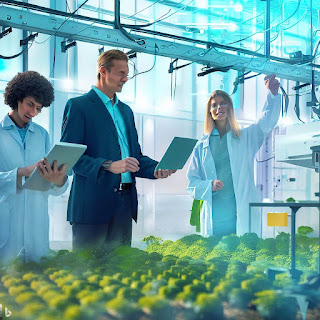As we journey through the annals of history, it becomes evident that scaling — the ability to grow operations and impact without a linear increase in costs — is a cornerstone of evolutionary progress. From the rudimentary dynamics of agricultural cultivation to the dizzying acceleration of the digital age, scaling has remained at the epicenter of advancement, shaping civilizations and molding economies. To the discerning business executive and organizational leader, understanding this trajectory provides invaluable insights. Yet, even more crucial is the art of discerning the patterns of the past to navigate the uncharted waters of the future.
The Legacy of Scaling
1. Origin of Resources: The Agricultural Revolution was a testament to humanity's ability to harness nature's bounty at scale. It illustrated that when resources are effectively managed, they can cater to a much larger population than hunters and gatherers ever could.
2. Communication and Language: With the proliferation of languages such as Latin, French, and English, humanity witnessed that ideas, trade, and culture could traverse boundaries. This scalability in communication laid the groundwork for empires and global commerce.
3. Industrial & Technological Paradigm Shifts: The rise of manufacturers, coupled with scaling resources and suppliers, gave birth to the Industrial Revolution. Innovations like railroads, telephones, and the Internet underlined the principle that scalability is often powered by technological leaps.
4. Market and Economic Evolution: As venture capitalists, entrepreneurs, and industries recognized the profit potentials of scaling, economic systems evolved. Capitalism, with its emphasis on growth and profit, became the dominant economic model, supercharged by scalable advertising, communication mediums, and production methods.
5. Societal Movements and Global Events: World Wars, while tragic, demonstrated humanity's ability to mobilize resources and efforts at unprecedented scales. It underscored the reality that societal movements and global occurrences can act as catalysts for large-scale operations and innovations.
Future Scaling
Drawing from history, the future of scaling rests on several principles that executives and leaders must internalize:
1. Harness Technology: Much like the Internet or AI, the innovations on the horizon — quantum computing, autonomous processes and systems will redefine scalability. Leaders must remain abreast of technological advancement.
2. Prioritize Sustainability: As resources deplete, sustainable and regenerative methods will be the gold standard. Whether it's fusion energy or biodegradable electronics, the scalability of the future will be green.
3. Decentralization & Autonomy: Decentralized Autonomous Organizations (DAOs) hint at a future where traditional hierarchical structures might give way to more fluid, decentralized models. This could allow for more agile, scalable structures responsive to dynamic market conditions.
4. Ethical & Responsible Scaling: With advancements in areas like synthetic biology or brain-computer interfaces, ethical considerations will be paramount. Scalability should not come at the cost of moral integrity or societal well-being.
5. Adaptability & Resilience: The future, as always, is uncertain. Leaders must build organizations that can adapt, evolve, and pivot. Scalable systems of the future will be those that can withstand shocks, be they economic, environmental, or societal.
6. Value-driven Approach: In an age of information abundance, genuine value will be the true differentiator. Whether it's through personalized education platforms or unique AI-human pairings, offering unparalleled value will be essential for scalable success.
7. Continuous Learning: The leaders and organizations of tomorrow will be those committed to relentless learning. As history evolves and new paradigms emerge, continuous learning will be the bedrock of sustained scalability.
Scaling is more than just expansion; it's an art, a science, and a philosophy. By imbibing lessons from the past and crafting strategies for the future, business leaders can ensure not just growth but meaningful, sustainable, and ethically sound expansion. The canvas of the future is vast, and for those willing to understand and adapt, the possibilities are boundless.
*I use generative AI to assist in all my work.
************************************************************************
Kevin Benedict
Futurist at TCS
View my profile on LinkedIn
Follow me on Twitter @krbenedict
Join the Linkedin Group Digital Intelligence
***Full Disclosure: These are my personal opinions. No company is silly enough to claim them. I work with and have worked with many of the companies mentioned in my articles.







